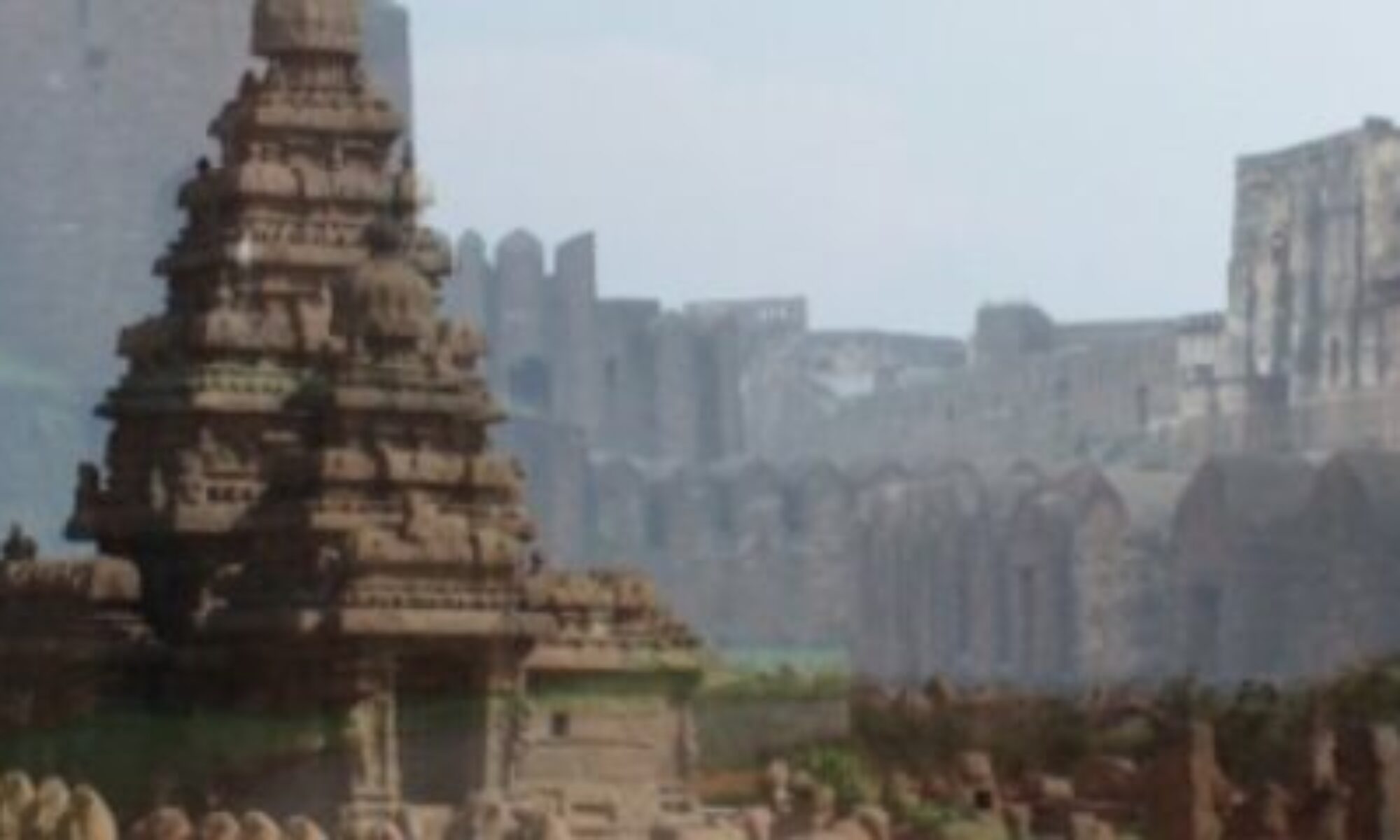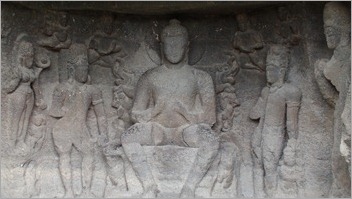 The next four or five caves are somewhat difficult to arrange satisfactorily. It is not easy to say how many of the apartments were separate caves, how many belonged to one. We shall, however, take first the lower floor of the next group as Cave 4.
The next four or five caves are somewhat difficult to arrange satisfactorily. It is not easy to say how many of the apartments were separate caves, how many belonged to one. We shall, however, take first the lower floor of the next group as Cave 4.
This cave is much ruined, the whole of the outer half of it having disappeared. It measures around 35 feet wide and 40 feet deep up to two pil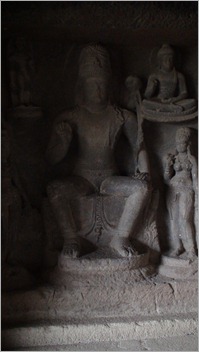 lars with pilasters with capitals having drooping florid ears, the shafts being square below and the necks having 32 flat flutes, behind which is a cross aisle. The entrance is by means of a side door facing the south.
lars with pilasters with capitals having drooping florid ears, the shafts being square below and the necks having 32 flat flutes, behind which is a cross aisle. The entrance is by means of a side door facing the south.
At the left end, is a prominent figure of Padmapani seated like a Buddha, with a high head-dress, a small image of Buddha as a crest on the front of it, and his locks hanging down upon his shoulders, a deer skin upon his left shoulder, a mala or rosary in his right hand, and clasping a lotus to his left thigh. He is attended by two females, one on his right hand with a rosary, and t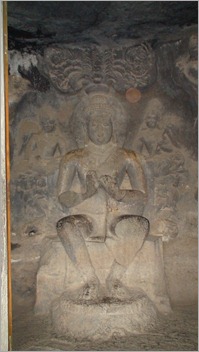 he other holding a flower bud. Above the first is a standing Buddha or Bodhisattva; and over the latter Buddha, seated cross legged on a lotus (abhaya mudra) with his right hand raised and the left down in the attitude of blessing. This scene is extremely rare where Padmapani is larger than Buddha.
he other holding a flower bud. Above the first is a standing Buddha or Bodhisattva; and over the latter Buddha, seated cross legged on a lotus (abhaya mudra) with his right hand raised and the left down in the attitude of blessing. This scene is extremely rare where Padmapani is larger than Buddha.
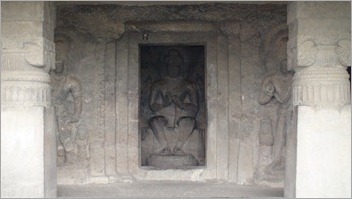 The back wall is pierced with doors to two cells and the shrine. The dwarapalas are carved with elaborate head-dresses, and a dwarf stands between each and the door. In the shrine Buddha is seated in the usual teaching attitude with a nimbus behind his head and the sacred Bodhi tree rising from behind it. The attendants in this case stand behind the throne, and are carved in bas-relief. The tall attendant on his left is richly dressed, and with a janvi
The back wall is pierced with doors to two cells and the shrine. The dwarapalas are carved with elaborate head-dresses, and a dwarf stands between each and the door. In the shrine Buddha is seated in the usual teaching attitude with a nimbus behind his head and the sacred Bodhi tree rising from behind it. The attendants in this case stand behind the throne, and are carved in bas-relief. The tall attendant on his left is richly dressed, and with a janvi 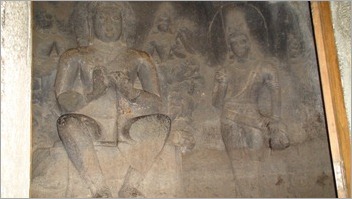 across his breast. The other is destroyed.
across his breast. The other is destroyed.
In a cell on the south side of this cave is some sculpture. The left side of it is broken away, and is now blocked by a mass of rock that has slipped down from above. The figures are principally Buddha with attendants, and a female with rosary etc. but to the west of the door is a Padmapani, and half of what is already described in the last cave as a sort of litany, only that there are two supplicants in each case, and that a smaller flying figure of Padmapani is represented before each group.
We shall now visit the next cave, the biggest vihara in all the Buddhist Caves in Maharashtra.
